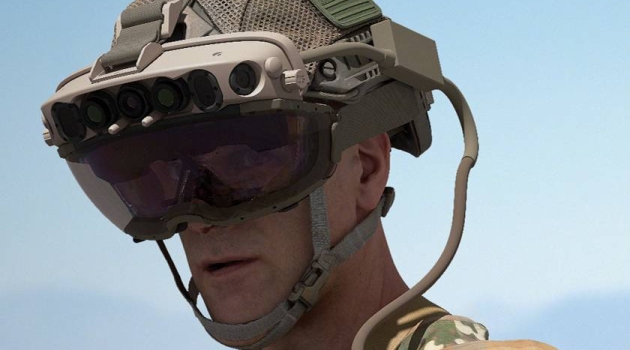In-laws have significantly cut the amount the U.S. Army can spend on its AR helmet plans this year. With the improved version of HoloLens, the new round of testing is expected to begin in the fall.
It was signed almost two years ago, in the spring of 2021 $22 billion framework contract US Army with Microsoft. They wanted to improve the capabilities of soldiers with helmets on the battlefield capable of displaying digital information and a tactical system (Integrated Visual Augmentation System – IVAS). However, the special HoloLens, suitable for displaying mixed reality and adapted to the needs of the military, did not perform optimally in the first tests, which led to several delays in the planned introduction.
And it appears that formal commissioning of the system will certainly not begin this year, as the recently adopted Budget Authority Act revealed that only $40 million of the $400 million requested by the Army for this year has been approved by lawmakers. The latter can only be spent on research and development, i.e. this is what Microsoft gets its engineers to try to correct the shortcomings and bugs of the current version.
painful points
Last fall, Bloomberg aired it from the Pentagon Testing Office Summary reportWhich revealed that the soldiers who were wearing the headphones suffered “physical damage that affected the mission” in many cases. Unwanted side effects include headache, eyestrain, and nausea. More than 80 percent of those experiencing discomfort developed symptoms less than three hours later.
It can be seen as a direct consequence of all this that the US military announced last week that on December 20, a few days before Congress passed the bill, it tasked Microsoft with developing version 1.2 of IVAS. According to the announcement, rendering of the latter could begin in September, but given the date, that probably just means that new test rounds are scheduled for launch in the fall. Only after these are successfully completed can the budget taps actually open and large-scale installation of the system can begin, preferably sometime in 2024.
It stretches like pretzels
Microsoft still He won it in 2018 First major military purchase with its own headset offering augmented/mixed reality. At that time, under the Integrated Visual Augmentation System (IVAS) project, the company received a $480 million order to deliver a HoloLens-based system, which aims to provide soldiers with better and faster information and improve communication between different parts of the team and command.
However, the software was just a pilot for the final form of special AR helmets, with which soldiers could display, among other things, a map of their surroundings, the location of their comrades and possible enemy locations. It seems that the prototypes brought the level that the military leadership expected, and that’s when the aforementioned agreement, which is worth up to $ 22 billion in the long term, was concluded.
After that, things slowed down amazingly. The final battlefield test before serial production was supposed to take place in September 2021, but after it was missed, It became clearthat the previously hoped-for rapid system setup of the devices will not materialize either.
In January last year, it was also revealed that the system’s performance so far Not good enough for that, so that IVAS can be used in battlefield conditions. At that time, the parties were still calculating that all problematic cases would be closed by September 2022, but this turned out to be a vain dream in light of what happened.












































